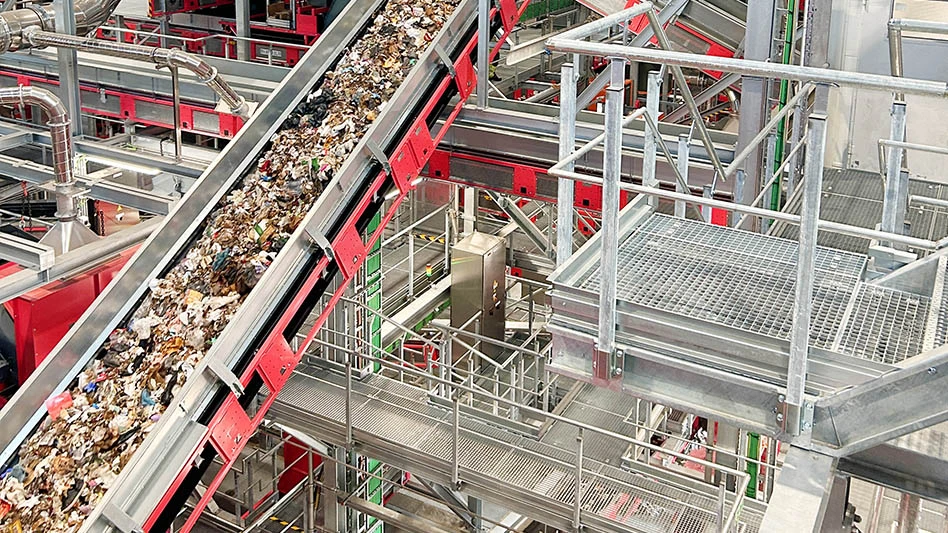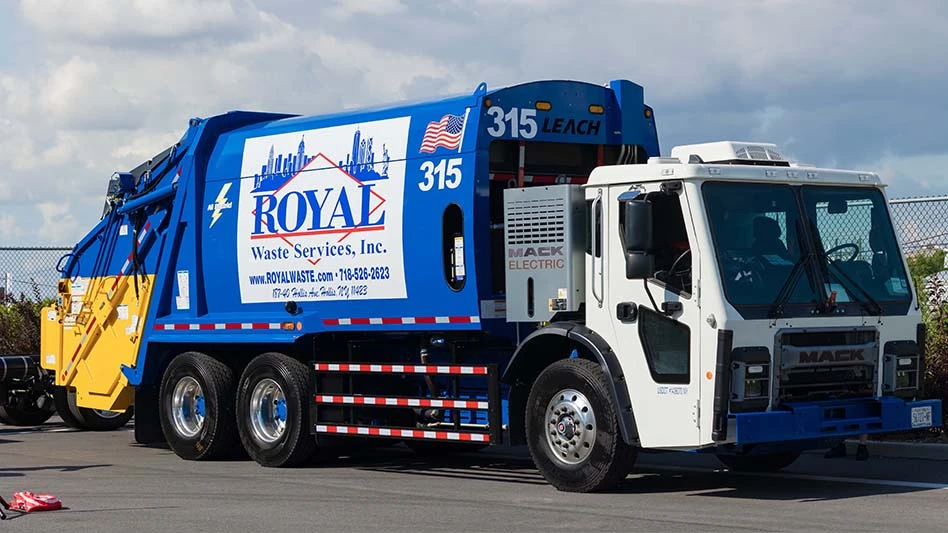
Photo courtesy of SSI Shredding Systems Inc.
Wilsonville, Oregon-based SSI Shredding Systems Inc. has introduced a new high-speed, single-rotor shredder aimed at "a rapidly evolving segment of the waste-to-energy market."
SSI's product development team engineered the new shredder, the SR900F, to produce refuse-derived fuel (RDF) by creating 1-inch-minus material with “unprecedented throughput and efficiency.”
The shredding and recycling equipment maker says the SR900F was developed as the result of a collaborative effort between sales, engineering and in partnership with some of SSI’s long-term customers.
“We rely on our customers as members of the team,” says Paul Breithaupt, senior engineer at SSI, adding that customers bring observations and insight tied to real-world conditions that, when combined with SSI’s decades of engineering and application experience, result in a purpose-built machine.
Regarding the SR900F, , “I think we've brought more people into one design than any shredder project that I've been around for, and the machine came together really well," SSI product and design engineer James Luce says of the SR900F.
Traditionally, SSI's RDF systems have relied on shear shredders to create 2-inch-minus material. A PRI-MAX primary reducer breaks down material and feeds it into a Quad model four-shaft shear shredder, which creates that final particle size.
“This system excels at processing heavily contaminated material while still delivering a two-inch particle size in the finished fuel,” SSI says.
However, there is growing demand for 1-inch fuel, according to SSI, which meant an alternative was needed and, thus, the SR900F concept was born.
“We knew the solution would be a Uni-Shear,” says Dave Welters, a mechanical engineer and project manager for the SR900F. “It’s a knowledge base we have a lot of history and experience with."
The Uni-Shear line of SSI’s single-rotor shredders and grinders offer high throughput potential when processing clean materials, according to the firm.
The SR900F features an increase of rotor speed, more than twice that of the predecessor SR900G, to significantly increase the number of cuts per minute, allowing for more aggressive shredding of light material, according to SSI.
“Fuels production is a game of volume,” Breithaupt says.
The project involved adapting the SR900G, a mid-speed single-rotor shredder originally designed for materials including tires and auto shredder residue to refine the machine for lighter feedstock such as fuels.
SSI says its engineers traded some torque for higher rotor speed to improve throughput. In addition to increasing the rotor speed, the development team redesigned the cutter geometry and added a second anvil bed to enhance performance with light, high-volume material.
“We replaced our traditional diamond cutters with broader, flat cutters,” Breithaupt says. “That change increases the cutting surface while allowing for a tighter shear gap. It also helps channel material through the chamber and sweeps the screen more effectively.”
The second set of anvils, stationary knives that sit opposite the rotor, doubles the number of cutting opportunities per revolution to further enhance the throughput capacity, according to SSI.
The company says the SR900F retains maintenance-friendly features of the SR900 base model.
“After we showed the customer the maintenance features, they were really excited by how easy it is to get in and service the cutters, the anvils and pull the screens out,” Welters says.
During the testing stage of the SR900F, Luce says, “We couldn’t get a conveyor fast enough to keep up with the production, and the machine was almost silent, like it wasn’t stressing.”
An SR900F has been delivered to a longtime SSI customer, and the early results have been overwhelmingly positive, the company says.
The goal was 20 tons per hour of 1 inch-minus output, and the SR900F is hitting that with ease, SSI says, adding that as the line is tuned, the throughput increases.
“I laid out the system on a computer, and then I got to see it in person,” Welters says. “We turned it on, material started flowing, and the customer had a huge smile on their face. And it's just really rewarding to see it come together.”
Breithaupt says field testing could yield further improvements.
“We want to iterate and capture as many of those good ideas and good feedback as we can,” he says.
Latest from Waste Today
- FZUK announces new commercial director
- Small-scale WTE partnerships
- Northwest Natural Renewables proposes Ohio landfill project
- US Senate backs reduced cuts to EPA
- Waste Connections announces Q2 results
- Returnity and Cosmoprof to address reusable bag waste
- SWANA releases report on aging WTE facilities
- New economic assessment reveals cost benefits of California’s SB 54





